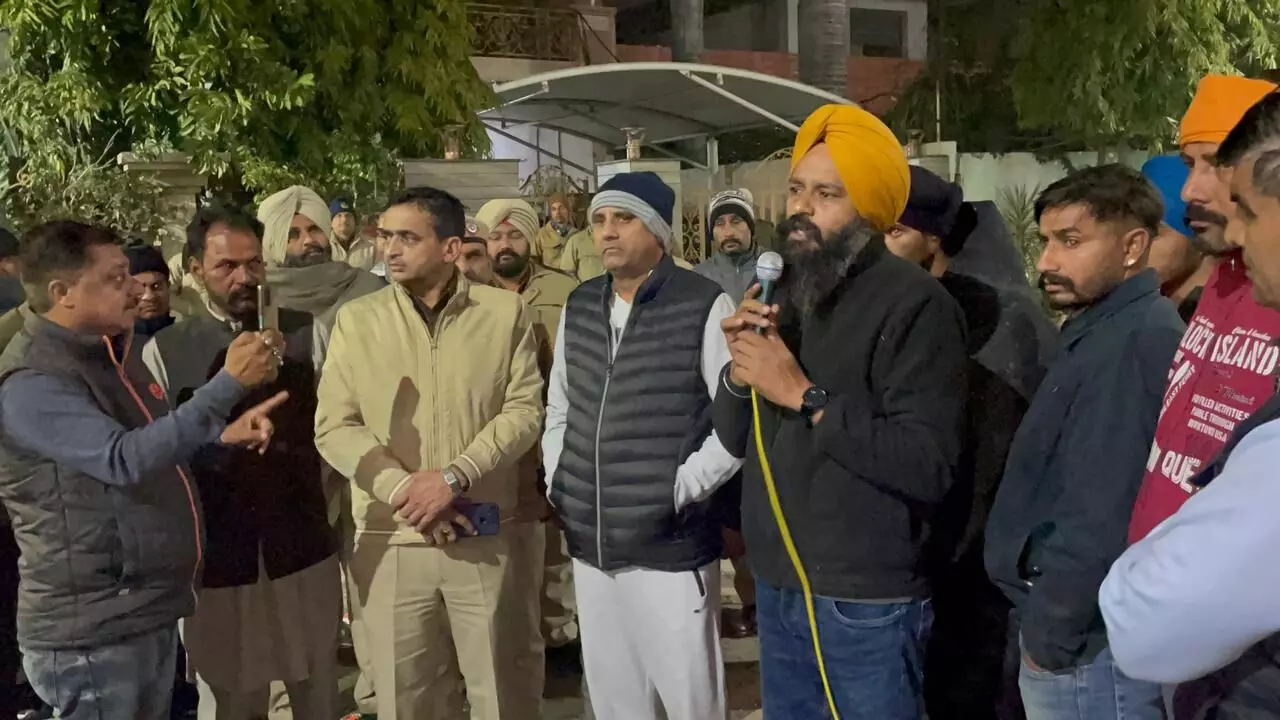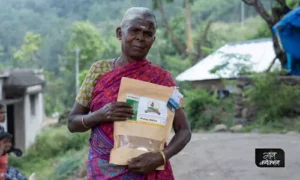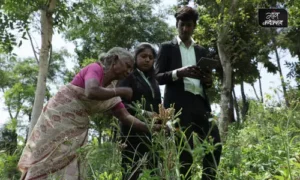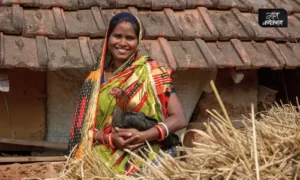Yesterday, on December 12, in the biting cold winter night, hundreds of farmers from villages in Ambala district in Haryana brought along 35 tractors loaded with cows and bulls to protest against stray cattle menace.
Wrapped in their thick shawls and blankets they first gathered at Ambala’s wholesale grain market and then headed to the official residence of Aseem Goel, the BJP MLA from Ambala City constituency, along with the tractors of cattle.
They did a sit-in protest outside his residence till late in the night. The protesters dispersed from the MLA’s residence only at 1 am after he assured them that the government would look into their grievances.
At present, the cattle brought by the protesters have been shifted to the Police Lines ground in Ambala.
The protest is spearheaded by Bhartiya Kisan Union Shaheed Bhagat Singh, a farmers’ union, and according to its official press release, the stray cattle are not only damaging to the crops but are also endangering human lives.
Also Read: ‘Rs 50 Per Cow Per Day’: Uttar Pradesh Govt Releases Funds To Deal With Stray Cattle Menace
The press statement signed by farmers’ leader Tejveer Singh said that in the last five years, almost a thousand people in Haryana have lost their lives in stray cattle-related incidents.
“Stray cattle not only damage crops, they also often cause fatal mishaps. Despite repeated requests, the administration and the government have failed to check this menace,” said Tejveer Singh.

The ban on cattle trade was the problem, said Tejveer Singh, the leader of the farmer organisation. He argued that when India is the largest exporter of beef then the farmers should be allowed to sell their cattle.
It is not the first time that farmers have resorted to bringing stray cattle into Ambala city. On February 14 this year, which the Animal Welfare Board of India marks as Cow Hug Day, the farmers had brought stray cattle to the city and the district administration had promised there would soon be a solution to the problem.
Cow Cess Questioned
The protesters also questioned the Cow Cess which was imposed for the first time in Punjab in 2009 and was followed by states like Rajasthan and Uttar Pradesh in 2018 and 2019 respectively.
Cow Cess is the tax levied by the government to raise funds to manage the crisis of stray cattle. The funds that are raised are meant to build animal shelters and provide for the management of the stray cattle.
The press release explained how this tax ranges from two per cent to 20 per cent across the country. It was imposed to raise funds to tackle the stray animal menace in the country. But, the fear was that the cess was becoming a means of raising revenue for the government but had failed to address the growing problem of stray cattle.
Also Read: Holy cow? Not for the UP farmer, who now spends nights protecting crops against stray cattle attacks
The ban on cattle trade was the problem, said Tejveer Singh, the leader of the farmer organisation. He argued that when India is the largest exporter of beef then the farmers should be allowed to sell their cattle.
“This ban on cattle trade has intensified the stray cattle menace. If the ban is lifted, it will solve the problem,” Singh said in the press statement.
Stray Cattle Numbers
As per the 20th Livestock Census report published by the Union Ministry of Fisheries, Animal Husbandry and Dairying in 2019, there are a total of 7,093 stray cattle in Ambala district.
The total stray cattle population in India is 50,21,587 with Rajasthan (12,72,277) having the highest number of stray cattle followed by Uttar Pradesh (11,84,494), Madhya Pradesh (8,53,971), Gujarat (3,43,918) and West Bengal (98,733).
Close on the heels of the assembly elections in Uttar Pradesh in 2022, Gaon Connection had published a detailed ground report which documented the issue of stray cattle in rural areas of the state.
The report mentioned that the stray cattle in the rest of the country had reduced by 3.2 per cent from 2012 to 2019. However, their population has registered a 17.34 per cent increase in Uttar Pradesh. “Though the state government has set up cattle shelters, levied additional taxes, and launched cow welfare schemes, farmers continue to suffer crop losses,” it stated.
With inputs from Brijendra Dubey


















